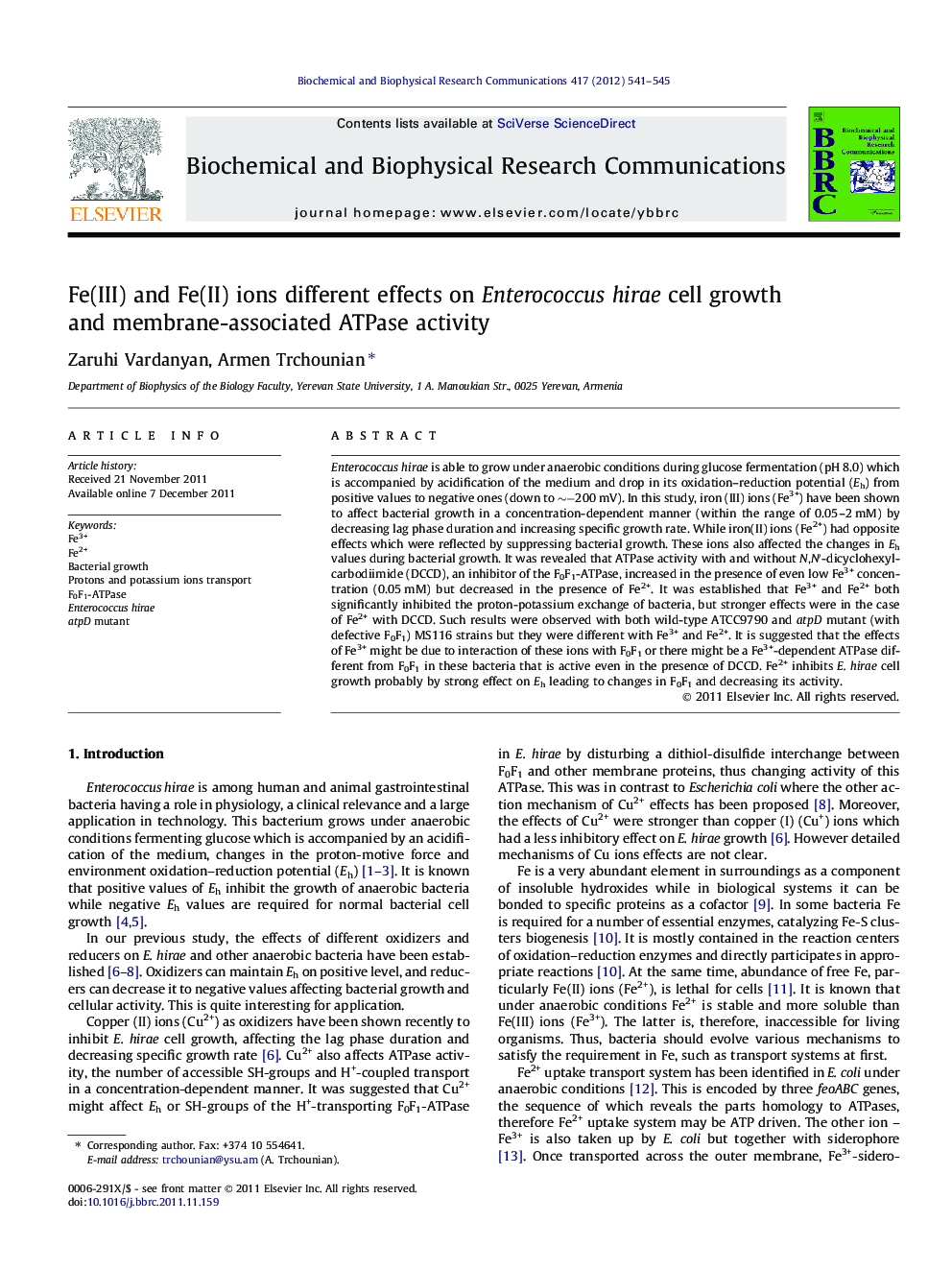| کد مقاله | کد نشریه | سال انتشار | مقاله انگلیسی | نسخه تمام متن |
|---|---|---|---|---|
| 1930158 | 1050489 | 2012 | 5 صفحه PDF | دانلود رایگان |

Enterococcus hirae is able to grow under anaerobic conditions during glucose fermentation (pH 8.0) which is accompanied by acidification of the medium and drop in its oxidation–reduction potential (Eh) from positive values to negative ones (down to ∼−200 mV). In this study, iron (III) ions (Fe3+) have been shown to affect bacterial growth in a concentration-dependent manner (within the range of 0.05–2 mM) by decreasing lag phase duration and increasing specific growth rate. While iron(II) ions (Fe2+) had opposite effects which were reflected by suppressing bacterial growth. These ions also affected the changes in Eh values during bacterial growth. It was revealed that ATPase activity with and without N,N′-dicyclohexylcarbodiimide (DCCD), an inhibitor of the F0F1-ATPase, increased in the presence of even low Fe3+ concentration (0.05 mM) but decreased in the presence of Fe2+. It was established that Fe3+ and Fe2+ both significantly inhibited the proton-potassium exchange of bacteria, but stronger effects were in the case of Fe2+ with DCCD. Such results were observed with both wild-type ATCC9790 and atpD mutant (with defective F0F1) MS116 strains but they were different with Fe3+ and Fe2+. It is suggested that the effects of Fe3+ might be due to interaction of these ions with F0F1 or there might be a Fe3+-dependent ATPase different from F0F1 in these bacteria that is active even in the presence of DCCD. Fe2+ inhibits E. hirae cell growth probably by strong effect on Eh leading to changes in F0F1 and decreasing its activity.
► Fe3+ stimulates but Fe2+ suppresses Enterococcus hirae wild-type and atpD mutant growth.
► Fe ions change oxidation–reduction potential drop during cell growth.
► Fe3+ and Fe2+ have opposite effects on a membrane-associated ATPase activity.
► These effects are either in the presence of F0F1 inhibitor or non-functional F0F1.
► Fe ions decrease protons and coupled potassium ions fluxes across the membrane.
Journal: Biochemical and Biophysical Research Communications - Volume 417, Issue 1, 6 January 2012, Pages 541–545